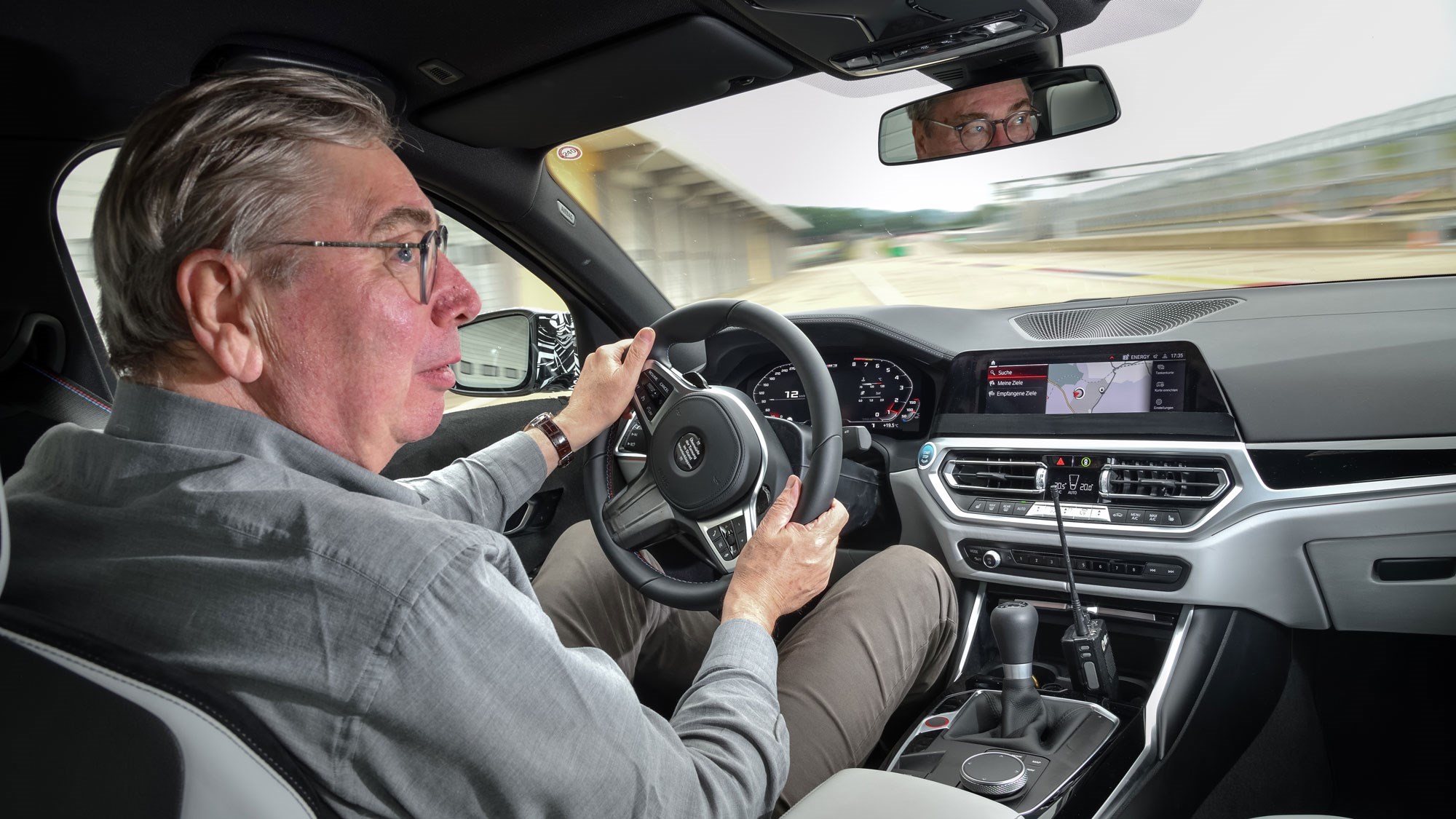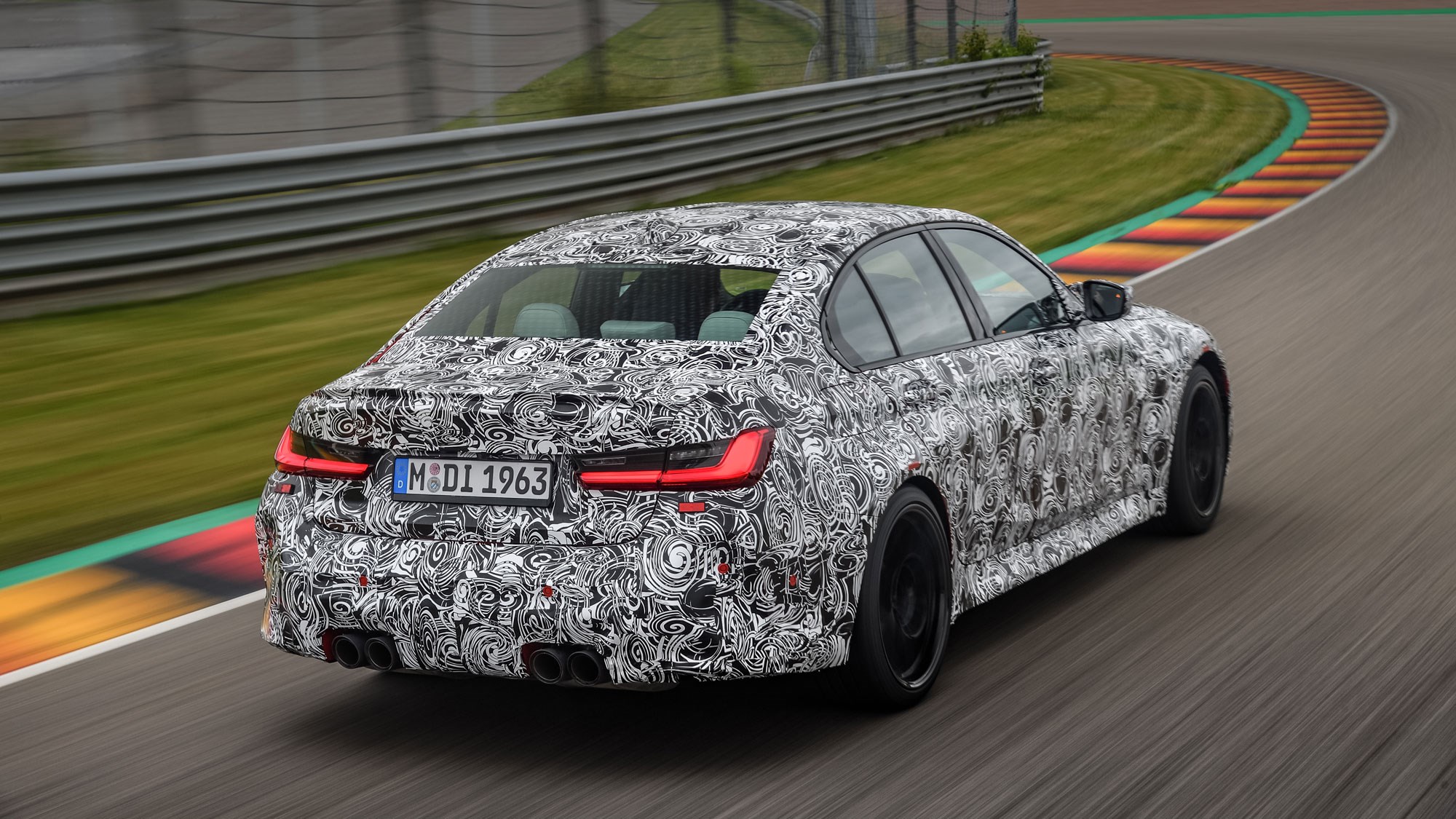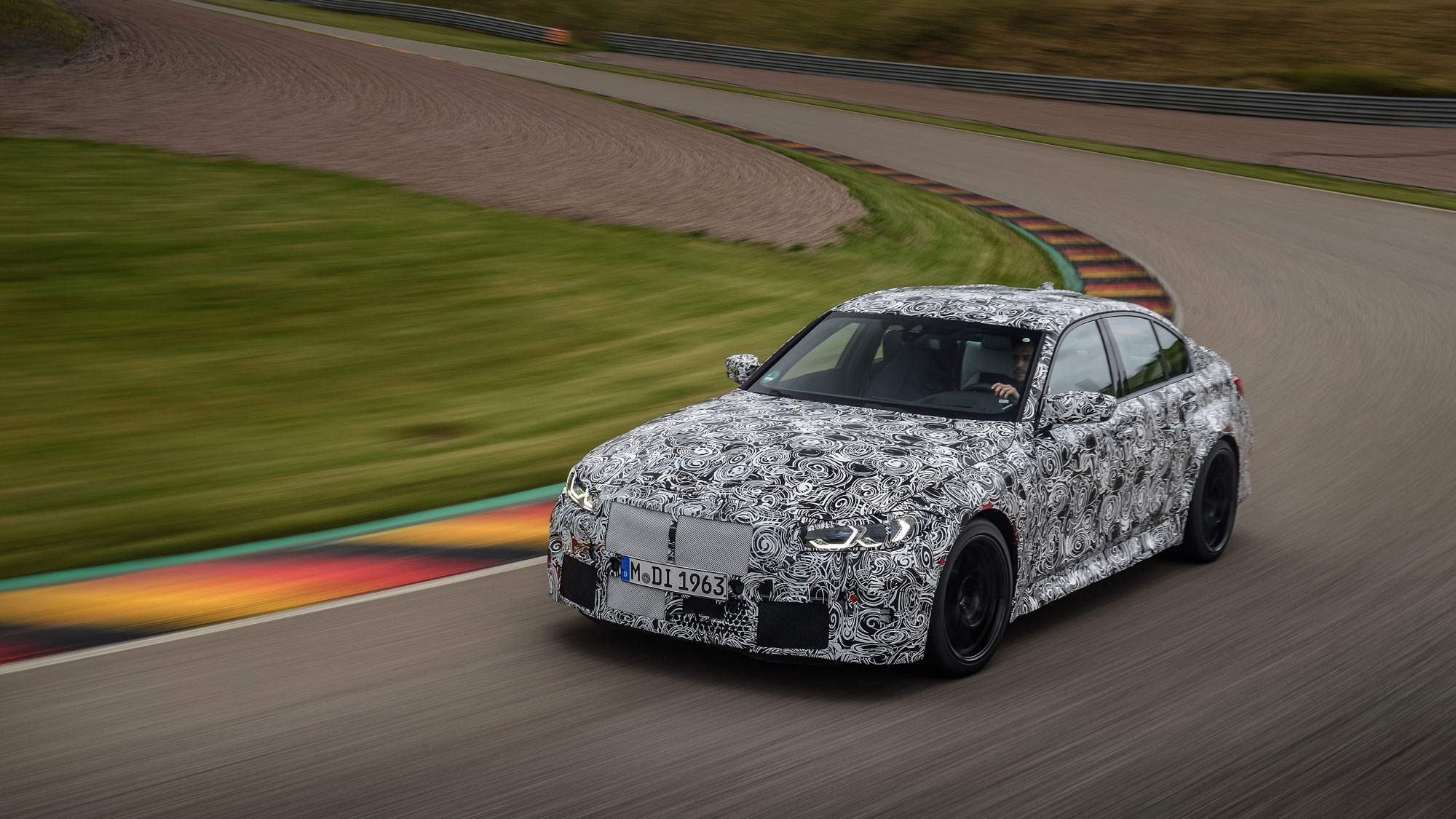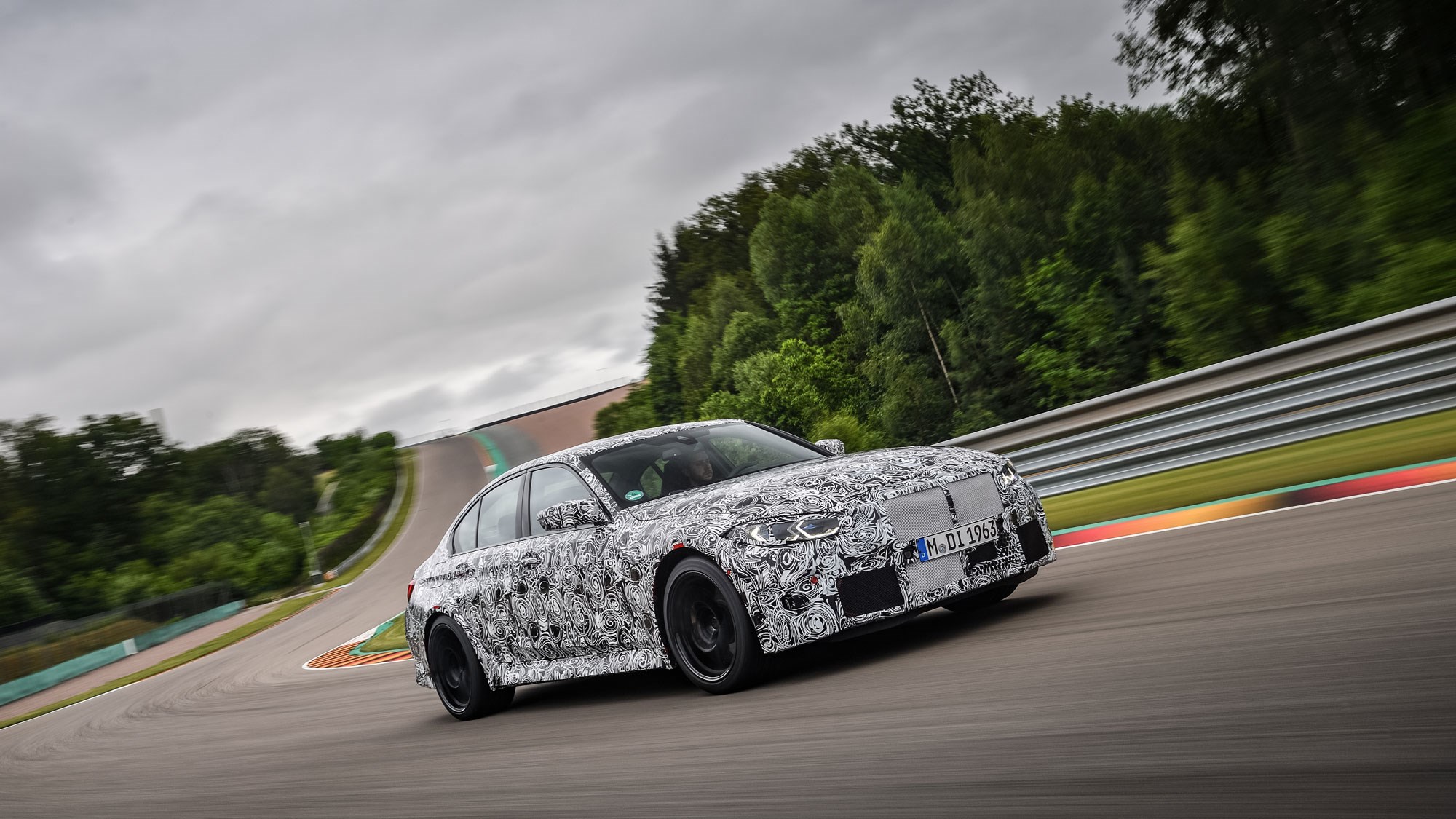► The 2021 M3 driven
► 472bhp, 479lb ft
► In the rain, on track
Raining? Cats and dogs mate. What counts right here and now is grip, and grip only. The plan is to kick off the session in the current M4, then step into the new car. A quick reminder: the current M4 weighs 1660kg (with the twin-clutch ’box). It’s powered by a 3.0-litre twin-turbo straight-six good for 444bhp and 405lb ft. Key to its talents are its mixed wheel sizes – 19-inch up front, 20-inch at the back – and the electronically-controlled M diff, for optimum traction and grip.
What’s different?
We pit, and I swap my 2019 M4 for a 2021 M3. The difference? Obviously four doors instead of two, an additional 25kg and a one-tenth from zero to 62mph compared to the new M4. Both pre-production cars are fitted with six-speed manuals, which further reduces the subjective difference in performance between previous and future, even though the latest metamorphosis of the S58 engine delivers 473bhp and 479lb ft.

Although M xDrive will next year be available in combination with the more powerful M3/M4 derivatives, the bottom-rung beast remains rear-drive only, just like the car five generations before it.
Dynamically more significant than the beefed-up drivetrain is the more advanced CLAR donor platform, which also underpins the latest 3- and 4-series (we drove the latter in last month’s issue). It is stiffer, approximately 50kg lighter and more competent in terms of handling, road holding and ride.
How does it handle, then?
Turn-in is as brisk and positive as ever. If anything, the feedback is now meatier, marginally more positive, better grounded. This is the result of changes to more than just the steering itself; congenial partners include redesigned suspension, tuned kinematics, recalibrated springs and dampers, thicker anti-roll bars and notably tauter mounting points all round.
Steering effort decreases when you switch from Sport Plus to Sport, and again when you go back to Normal. Although the increased lightness is accentuated by today’s slippery surface, the steering feel is still there in 3D haptic force, with input, weight and self-centering action delivering a persuasive lesson in homogeneity.

It’s this awesome front-axle grip, rather than the car’s stopping power, which dominates the driving experience. Because the front tyres just hang on and on, the new M3 can carry quantifiably more speed into a corner than before.
Like the M2 CS, the latest M3 is fitted with a forgiving clutch and an undemanding gearbox. Sounds like a compliment; in fact it’s a gift-wrapped criticism. Must the clutch and tranny of an M3 really feel as soft and indifferent as their 420i equivalents?
The M Steptronic with Drivelogic is the more compelling option. Although single-gear upshifts take the blink of an eye longer, multi-gear jumps are quicker, and one must not forget that BMW’s accountants simply love the substantially cheaper ZF auto ’box used across the entire CLAR range.

What about the engine?
The 473bhp powering our prototype is only an appetiser – there’s a lot more grunt to come. It starts with the M3/M4 Competition versions, which will get 503bhp, followed by the mildly decontented and even sportier CS – rated at 527bhp – and trumped by the no-holds-barred CSL, with its higher-revving 542bhp engine.
But the key go-faster innovation for the new M3/M4 is the M xDrive all-wheel-drive system, which promises to shave two-tenths off the 0-62mph time while offering the dynamic spectrum from safe AWD to lurid RWD. The exact number, relayed off the record, is 3.8sec 0-62mph, which should improve to 3.6sec and even 3.4sec respectively as the more potent engines become available. By specifying the M driver’s package, the top speed of 155mph can be increased to 175mph. The M4 CSL will nuzzle up to the 200mph barrier, sources say.

Is it predictable?
Let’s face it: losing grip in the rain under power is part of this car’s DNA – if an M4 never steps sideways, you’re not trying hard enough. It’s a different story in the dry, when on-demand oversteer is there for the taking in the bottom three gears.
To fully relish this innate tail-happiness, the new M3/M4 comes with a new drift control analogous with the AMG’s yellow oversteer thumbwheel. Wind things off progressively and you can learn on the job, in safety.
Verdict
It’s a better car now in almost every respect, and that appeal will only grow when it becomes available in AWD guise (due mid-2021, a few months after the rear-drive car goes on sale; the soft-top M4 will arrive late next year). The first M car to go all-wheel drive, the M5, is currently the best car BMW makes. That accolade may last only as long as it takes us to get behind the wheel of the M3 blessed with the same technology.